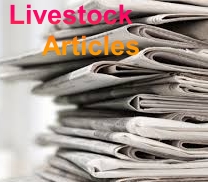Ayrshire Cattle Breeders Society
The Ayrshire Cattle Breeders’ Society of South Africa (ACBS) is dedicated to the well-being of the Ayrshire cattle community, and provides farmers with extensive knowledge of the breed.
The society consults with a network of both local and international experts to ensure the sustainability and quality of breeding of Ayrshire cattle.
The society was founded in 1916 with the main objective to control registration and to make sure that the Ayrshire breed would be kept pure. In 1917, the Registrar signed the certificate recognising the Ayrshire as a full breed. After the signing, a need arose for breeders’ associations to play a role in the Stud Book Society; and thus the cattle breeders’ community expanded.
The Ayrshire Cattle Breeders’ Society was formally established with the First Annual General Meeting of members held in 1917. The society was incorporated into the international Ayrshire Society according to the Studbook Act, Act No 22 of 1920.
ACBS encourages the quality of breeding and production of Ayrshire cattle and its products, which are all dairy-based. The breed is known for producing milk of great quality and value, used to make cheese, cream, yogurt, butter and cultured buttermilk. The popular retailer Woolworths uses Ayrshire milk for its brand of dairy products.
History of the Ayrshire Cattle
The Ayrshire cow originated in the district of Ayr in the southwest of Scotland, and was regarded as an established breed by 1812.
James Rawbone of Somerset West in the Western Cape imported the first Ayrshires to South Africa in 1890. Since then, the breed has established itself as one of the important dairy breeds in the country.
The Ayrshire cow is known for its excellent feed conversion ratio and its ability to graze. Its ability to function in either warm or cold climates is illustrated by the fact that there are more Ayrshire cows in Russia than in the rest of the world, and in Kenya, with its tropical climate, 67% of the dairy cattle are Ayrshires.
The milk is high in components and gives exceptional cheese yields. Ayrshire milk is referred to as ‘the ideal drinking milk’. An Ayrshire range of products is marketed successfully through Woolworths in South Africa, and also in other parts of the world.
As a result of the successful marketing of the Ayrshire brand in Woolworths, there has been a positive spin-off for many Ayrshire breeders and the Ayrshire Cattle Breeders’ Society, who serve them by registering their animals, keeping pedigree records and generally ensuring the continued growth and viability of the breed.
Members of Ayrshire Cattle
The Ayrshire Cattle Breeders’ Society consists of a dedicated council and management team, as well as a list of members that are Ayrshire cattle breeders, farmers and stakeholders.
The council is made up of agricultural experts with a history of cattle breeding and farming. Their portfolio involves participant applications, event and expo planning, consultation with stakeholders and discussions surrounding local market trends and livestock management.
There are currently 49 members that form part of the society, who are Ayrshire cattle breeders and farmers. Other members include Ayrshire dairy producers, as well as dairy suppliers.
According to the Ayrshire Constitution, members of the society consist of ordinary and honorary life members. Ordinary members have the right to vote at any general meeting of the society, and the right to be elected to the council. Honorary life members are those who have participated in special services in the interest of the Ayrshire breed, and they can be elected at an annual general meeting. They also have the right to vote at any general meeting, and can be elected to the council.
Special honorary members are those who are not necessarily actively engaged in the breeding of animals, but would like to be part of the society. They, however, do not have voting rights and cannot be elected to the council.
An application for membership is available on the Ayrshire Cattle Breeders’ Society’s website.
Woolworths Ayrshire Cattle Breeders Society
Woolworths works with the Ayrshire Cattle Breeders’ Society to bring consumer high-quality Ayrshire dairy products.
Woolworths Holdings Limited is a South African retail company that owns the South African retail chain Woolworths.
In 1987, Woolworths tasted and tested milk from a number of different dairy breeds, and asked customers, through a series of impartial surveys, to help us choose the milk they thought tasted the best. The winner, hands-down, was Ayrshire, a breed of cow originally bred in the County of Ayr, in Scotland, during the 17th Century and first brought to South Africa in 1890. Customers were impressed by its quality, and by what they described as Ayrshire milk’s delicious flavour and creamy mouthfeel.
More than two decades later, Woolworths is proud to be the only retailer in South Africa to offer not only Ayrshire milk, but a whole host of really delicious Ayrshire dairy products, including yoghurt, butter, cheese, buttermilk and cream.
Woolworths has an excellent relationship with its partnered Ayrshire dairy farmers around the country, who are dedicated to following the best practices in caring for their herds and making sure they’re relaxed and healthy, because contented cows produce high-quality milk.
The Differences Between Dairy Cows
Dairy Farming in South Africa
The four main dairy breeds - Holsteins, Jerseys, Ayrshires and Guernseys - vary in terms of live weight, milk yield and milk composition, but the variations within a specific breed are similarly large.
Characteristics of Holstein Dairy Cows
Holstein cows are high-yielding dairy cows and comes in 'red' or black varieties.
Holsteins have distinctive markings, typically black and white in colour although red and white also occur. It is a strong and heavy cow ranging from 550 to 750 kg, with high milk yield levels, averaging about 8550 kg in a 305 day lactation period (average 28 liter/day). Average milk fat levels are between 3.0% to 4.2% while protein content varies from 2.5% to 3.8%.
When feed is limited or of poor quality, the large framed Holstein cows will be less suitable. Generally, Holsteins are used in zero-grazing systems such as intensive housing systems or in open camps. They are fed a total mixed ration consisting of forages (hay, grass) and concentrates (bought-in pellets high in energy and protein) mixed according to milk yield or stage of lactation.
Because the Holstein breed is the largest dairy breed in the world, a large number of sires are available for artificial insemination. This means that it would be possible to maintain genetic progress for milk yield while improving traits like fertility.
Characteristics of Jersey Dairy Cows
Jersey cows are small friendly animals producing milk with a very high butterfat content.
Jersey cows are smaller, brown and white in colour and weigh 350 to 450 kg. Their milk yield is lower than that of Holsteins, being about 5000 kg per lactation although Jersey milk has higher levels of solids components; fat levels are 4.0% to 5.5% and protein percentages range from 3.5% to 4.5%.
Jersey cows have a mild temperament although Jersey bulls are known to be aggressive. Jerseys are generally used in a pasture-based system because of their good grazing ability while requiring smaller amounts of concentrates because of lower milk yield levels.
Characteristics of Ayrshire Dairy Cows
Ayrshires are suitable for warm and cold climates and have good udders and strong legs.
Ayrshires, originally from Scotland, are strong robust animals with well-attached udders. Their coat colour varies from light to deep red/brown combined with white. The live weight of Ayrshire cows ranges from 400 to 600 kg.
Milk yield levels and fat and protein percentages are intermediate between Holsteins and Jerseys. Their milk fat particles are well dispersed in their milk, giving the milk a sweet taste and silky texture.
Characteristics of Guernsey Dairy Cows
The Guernsey dairy cow is extremely docile and her milk is excellent for cheese production. This cow was the 2018 champion and belongs to the Mann family of Trewey farm in Zennor, Cornwall.
Guernseys are medium-sized yellow to reddish-brown cows ranging in live weight between 400 to 550 kg. Guernseys are efficient converters of feed to product and can produce high-quality milk while consuming 20 to 30% less feed than larger dairy breeds.
Guernseys reach reproductive maturity early and can calve at 22 months - an early return on investment. Guernseys calves are big at birth, which are easy to rear yet with minimum of calving complications. The milk yield and milk composition (fat and protein levels) are intermediate between Jerseys and Ayrshires.
By Dr Carel Muller

.jpg)






